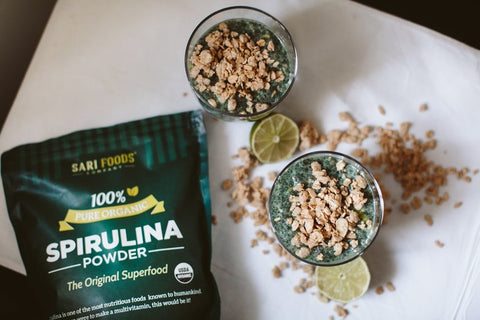How Food Brings the Family Together

Nourishing your family is about so much more than simply putting nutritious food on the table. For a lot of families, the simple act of coming together to enjoy meals can make all the difference when it comes to prioritizing emotional, mental, and physical health, and helping kids develop long-term healthy eating habits.
In fact, research shows that regular family meals can lead to higher self-esteem, stronger parent-child connectedness, a greater sense of resilience, and better nutritional intake.1 What’s even more compelling, these benefits can last well beyond childhood—children and adolescents who enjoy frequent dinners with their family members are more likely to make healthier nutritional choices when they are young adults and out on their own.2
The good news? Starting your children on a path of lifelong nutrition and well-being doesn’t have to be complicated! Just by using healthy food as a vehicle for enjoying time together as a family, you can instill in them a passion for bringing people together with food, whether it’s in their future dorm, a shared flat, or with a family of their very own.
Here are four simple ways you can make family meals one of the strongest (and certainly the most delicious!) foundations of your family’s health:
Plan a Nutritious Menu
When you’re making the decision to incorporate more family meals, you can save time in the kitchen and ensure healthy offerings by planning menus in advance. A solid menu plan will allow you to incorporate family favorites alongside healthy options so that your family can explore flavors and textures together.
For an incredibly nutritious family breakfast, spend a quiet morning together enjoying smoothies with your clan—acai, spirulina, and acerola cherry powders make delicious additions to any fruit or veggie-based concoctions.

Get creative with new menu ideas for lunches and dinners, like vegan macaroni and cheese that features nutritional yeast and yellow veggies, rather than traditional dairy products. Or turn a beloved casserole into a nature-inspired bowl meal that uses whole grains, veggies, and nutrient-dense superfood powders for added nourishment.
You can also include older children in your menu planning and prep work to help them take ownership of family mealtime and to encourage their future healthy habits.3 Plus, many hands always make light work, so even if you’re rushing home after work and school activities, your family can work together to prepare a delicious, nutritious dinner in no time!
Make Family Meals Easy...and Fun!
Gathering the family for mealtimes doesn’t need to revolve around a strict schedule or extra chores that keep you in the kitchen for hours, because what matters the most is spending time together, not where you eat or how fancy your spread. Your family can celebrate simple meals around the table, in the backyard, or at a park without too much fanfare.
But if you’re looking to add that special touch, consider teaching your little ones to set the table with place settings, flatware, and cloth napkins. You may even play around with serving meals as courses, like a salad, appetizers, vegetable main dish, scrumptious dessert, and so forth, to encourage your family members to take their time at the table.
If you’re venturing out of the house to enjoy a family meal, let your kids help to pack and carry picnic supplies to get them even more excited about your family dinner adventure.
Set the Stage for Lifelong Nutritional Benefits
When children are engaged in choosing and preparing their own nutritious food, they learn how to cook healthy, nourishing meals, and will ideally carry those habits into the future. As an added perk, when your family discusses healthful meal choices and enjoys new dishes or beloved family recipes together, you create lasting memories that your children will want to recreate as they get older.
Even teenagers—notoriously famous for their less-than-optimal food choices—are more likely to engage in healthy eating habits when they see them modeled at home, so if your family hasn’t been in the practice of eating meals together, remember that it’s never too late to make it a habit!2
Encourage Healthy Development
Children who have the opportunity to participate in candid conversations around the dinner table can develop their social skills by relating emotionally with their family members. These skills are essential for healthy social development and engagement through every stage of their lives.
What’s more, when the dinner table is a safe place for sharing thoughts and ideas, your entire family can converse in a way that sparks creativity and nourishes deeper relationships. You can encourage even your quietest family members to share tidbits about their days by establishing rotating conversational topics, sharing daily highs and lows, or choosing theme nights where the menu choices and conversation are centered around one specific idea.
Spending quality time with your family can be as simple as preparing a favorite, nutritious meal and carving out a half hour in which to eat it. In fact, you don’t even have to make your family mealtime a dinner event at all—perhaps a leisurely weekend brunch is more your brood’s style! Whatever combination works for your family, sharing a simple, nutritious meal together is sure to make a positive difference for many years to come.
References:
- Fishel, A. K. (2016). Harnessing the Power of Family Dinners to Create Change in Family Therapy. Australian and New Zealand Journal of Family Therapy,37(4), 514-527. doi:10.1002/anzf.1185
- Walton, K., Horton, N. J., Rifas-Shiman, S. L., Field, A. E., Austin, S. B., Haycraft, E., . . . Haines, J. (2018). Exploring the Role of Family Functioning in the Association Between Frequency of Family Dinners and Dietary Intake Among Adolescents and Young Adults. JAMA Network Open,1(7). doi:10.1001/jamanetworkopen.2018.5217
- Dwyer, L., Oh, A., Patrick, H., & Hennessy, E. (2015). Promoting family meals: a review of existing interventions and opportunities for future research. Adolescent health, medicine and therapeutics, 6, 115–131. doi:10.2147/AHMT.S37316



